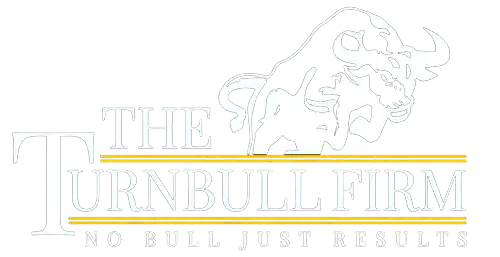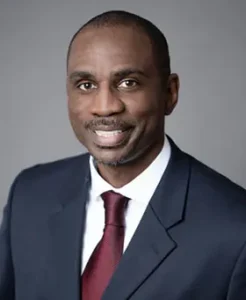Enhancing Fall Prevention Safety in Nursing Homes
We hope you find this Nursing Home Neglect Blog Article both Helpful and Informative.

Imagine a loved one residing in an ATLANTA nursing home, a place meant to provide care and safety. But what if the very place designated for their well-being becomes a minefield of risks and hazards? Falls in GEORGIA nursing homes are a grim reality that can lead to severe injuries and even death. But can they be prevented? Fall prevention in Atlanta nursing homes is a crucial aspect of ensuring the safety and well-being of residents. If you have questions, that is where our Atlanta nursing home neglect attorney can help.
Key Takeaways
- Understanding the high stakes of falls in Atlanta nursing homes are critical.
- Georgia Nursing homes should implement customized care plans, provide training for staff and evaluate environmental safety to effectively prevent falls.
- Tailoring fall prevention interventions to each resident’s individual needs and engaging family members are essential components for successful strategies.
Understanding The High Stakes Of Falls In Atlanta Nursing Homes
Falls in Georgia nursing homes are more than just unfortunate accidents; they can result in serious injuries, or worse, mortality. The repercussions of falling can range from minor abrasions to major trauma, like internal hemorrhaging, hip fractures, and cranial injuries. But the harm isn’t limited to physical injuries alone. The functional deterioration, diminished quality of life, fear of falling again, and social isolation that accompany a fall can be just as debilitating.
Thereupon,Atlanta nursing homes must prioritize effective fall prevention strategies as a necessity, not a choice. Multifactorial interventions tailored to individual risk factors are strongly recommended to prevent these disastrous outcomes. But what is the method to pinpoint those at risk initially?
Identifying Residents At Increased Risk Of Falling
Recognizing Georgia nursing home residents at heightened risk of falling is the first step in implementing specific fall prevention strategies. Factors such as age, pre-existing medical conditions, and medication use are noteworthy risk factors for falls in nursing homes. However, a methodical approach is needed to identify these risks.
The Hendrich II Fall Risk Model is a protocol that can be employed to systematically assess fall risks. Having a record of the medications a resident is taking can also be beneficial in reducing the risk of fall injuries. But the process begins with identifying risk factors. How can nursing homes take a forward-thinking approach to managing these risks?
Essential Fall Prevention Measures Every Atlanta Nursing Home Should Implement
Atlanta Nursing homes should ensure the implementation of customized care plans, provide regular training for nursing staff, and conduct environmental safety checks. Each of these measures holds its unique importance and deserves an in-depth examination.
Customized Resident Care Plans
A comprehensive, tailored resident care plan for fall prevention should encompass:
- Quantifiable objectives and measurable outcomes
- Consideration of the resident’s emotional well-being
- A personalized plan attending to the physical, emotional, and social needs of the resident
A one-size-fits-all approach can hardly be effective when it comes to fall prevention. Each of the fall risk residents has unique needs and specific risk factors that need to be considered.
Medication management is another key component of a comprehensive care plan. Significant reduction in medication-related falls can be accomplished through medication reviews, managing adverse effects of drugs, and vigilantly observing and adjusting medication routines. Yet, the role of medication management isn’t limited to merely mitigating risks; it also includes ensuring that the medication itself does not increase the risk of falls.
Regular Training For Nursing Staff
Prevention requires a group effort. The necessity for preparedness extends beyond residents; the nursing staff should also possess the knowledge and skills required for effective implementation of fall prevention strategies. This involves providing staff members with appropriate instruction and implementing fall reduction strategies and protocols.
There are several training programs for fall prevention in nursing homes, such as the LTC Fall Prevention Program, STEADI-based Fall Prevention Program, and Comprehensive Fall-Reduction Program. Regular training ensures that the nursing staff is up-to-date with the latest strategies and protocols to prevent falls.
Environmental Safety Checks
The residential environment significantly influences fall prevention. Environmental safety checks involve assessing the nursing home environment for potential hazards and making necessary adjustments to reduce the likelihood of falls. Simple measures like lowering the overall bed height can significantly reduce injuries and the number of falls.
Considering external factors that could potentially lead to falls is also important. Wearing slippers has been recognised as a possible cause of falls in long-term care settings. This was highlighted as a significant external risk factor. By identifying and addressing such environmental risk factors, nursing homes can further enhance safety and prevent falls.
The Role Of Physical Therapy In Fall Prevention
Physical therapy holds transformative potential in fall prevention. It can significantly improve residents’ strength, balance, and mobility, thereby reducing their likelihood of falling. Body exercise interventions, for instance, have demonstrated a noticeable decrease in the rate of falls in the hospital setting.
However, it’s not just traditional exercises that can be beneficial. Even the use of technical devices in exercise routines has shown a significant impact on falls. However, one must keep in mind that the effectiveness of these interventions can fluctuate based on residents’ physical conditions among other factors, underscoring the need for personalized interventions.
Technology And Innovations Aiding In Fall Reduction
With the advancement of technology, fall prevention strategies have extended beyond the traditional methods. Technological and innovative solutions, such as bed alarms, floor pads, and surveillance cameras, can be employed to provide an additional layer of safety.
Some examples of fall prevention tools include:
- Bed alarms, which can warn staff about potential fall risks by indicating when a resident attempts to leave the bed
- Floor pads, which can help cushion the impact of a fall and decrease the chances of injury
- Surveillance cameras, commonly referred to as “granny” cams, which can provide a real-time video feed of each resident, enabling staff to intervene when an individual is out of bed without supervision.
Addressing The Complexities Of Atlanta Nursing Home Neglect
Regrettably, not every fall is accidental. Georgia Nursing home neglect can lead to residents’ falls due to factors such as insufficient supervision, inadequate staff assistance, and environmental hazards, including cluttered pathways or poor lighting. Nursing home neglect is a complex issue with serious repercussions for elderly residents. The legal ramifications of neglect are severe and can result in lawsuits and regulatory penalties.
To tackle neglect, nursing homes should prioritize:
- Minimizing social isolation
- Closely monitoring prescribed medications
- Conducting regular check-ins
- Gaining familiarity with the primary caregivers
Only through a comprehensive approach can the complexities of nursing home neglect be effectively addressed.
Proactive Health Management To Minimize Fall Risks
Adopting a forward-thinking approach to health management is central to reducing fall risks. This involves vigilantly monitoring and addressing the health needs of residents before they become more severe. Regular health assessments can identify underlying health conditions that may contribute to falls, such as blood pressure issues, medication side effects, balance and gait issues, vision problems, and muscle weakness.
Medication review is another crucial aspect of proactive health management. It assists in identifying and addressing medications that may increase the risk of falls, such as fall-risk-increasing drugs (FRIDs). By regularly assessing residents’ health and addressing any identified issues, healthcare professionals can effectively implement appropriate interventions and preventive measures to reduce the risk of falls.
Creating A Culture Of Safety And Accountability
Establishing a culture of safety and accountability in nursing homes is vital for fall prevention. Such a culture includes:
- Recognizing the hazardous nature of post-acute care
- Refining systems of surveillance to ensure person-centered care and safety
- Demonstrating a steadfast commitment to worker safety
Cultivating such a culture influences nurses’ attitudes towards safety and has a direct impact on the rates of falls with injury. It fosters a positive attitude towards patient safety and encourages a commitment to creating a safe environment for residents. It’s not just about implementing strategies; it’s about fostering a mindset where safety is a priority.
Tailoring Fall Prevention Interventions To Each Resident
The effectiveness of fall prevention strategies is not just about what measures are taken, but how they are applied. Adapting fall prevention interventions to each resident’s specific needs and risk factors is vital for the implementation of the most effective strategies for each individual.
This involves:
- Evaluating individual fall risk factors
- Personalizing interventions
- Involving the resident in the process
- Adopting a multidomain approach
- Regularly reassessing and adjusting the interventions
By understanding the unique needs and risk factors of nursing home residents, nursing homes can implement interventions that are truly effective in preventing falls.
Navigating The Aftermath Of A Fall In An Atlanta Nursing Home
Despite the best efforts, falls can still happen. However, the events following a fall can shape the resident’s recovery and future fall risk. The immediate steps to be taken after a fall include providing appropriate medical care, assessing the cause of the fall, and implementing additional interventions to prevent future falls.
Understanding the cause of a fall is key to preventing future incidents. This requires undertaking a fall risk assessment and evaluating factors such as muscle weakness and gait problems. It’s not just about dealing with the aftermath of a fall; it’s about learning from it to prevent future incidents.
Frequently Asked Questions
What are the 5 P’s of fall prevention in Georgia nursing homes?
The Five P’s of Fall Prevention involve Potty, Pain Assessment, Placements, Positioning and Pumps, which are assessed during hourly rounding or more frequently when needed.
How do you prevent falls in an Atlanta nursing home?
To prevent falls in a nursing home, increase staffing levels, adjust bed and wheelchair heights, provide more frequent toileting assistance, use protective clothing such as wrist guards, hip protectors and helmets, reduce clutter, improve lighting and ensure furniture is stable.
What 5 interventions would be appropriate to prevent falls in Georgia nursing homes?
To prevent falls, an individual should ensure proper hydration, perform strengthening and balance exercises, remove tripping hazards, use assistive devices like canes and walkers, and get their vision checked regularly.
What are the high stakes of falls in nursing homes?
Falls in nursing homes can have devastating consequences, including serious injuries and even mortality, functional deterioration, reduced quality of life, fear of falling again, and social isolation.
Summary
Falls in nursing homes are a severe issue with far-reaching consequences. An Atlanta nursing home neglect attorney at the The Turnbull Firm can walk you through any concerns you may have about your loved one’s fall. We handle falls and nursing home neglect throughout Georgia. As seasoned nursing home abuse lawyers in Georgia we provide free consultations to address any lingering doubts you have regarding your loved one care.








